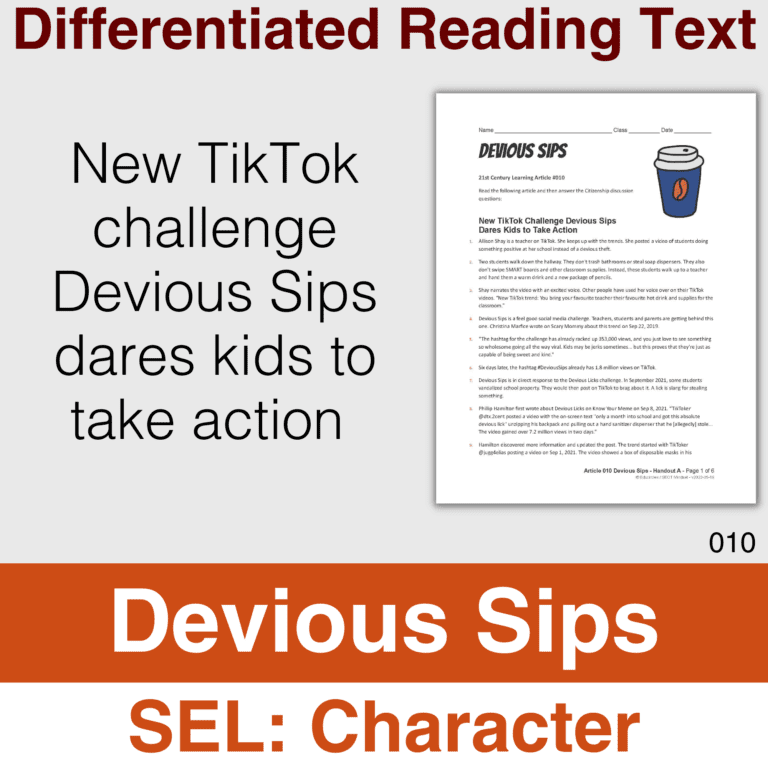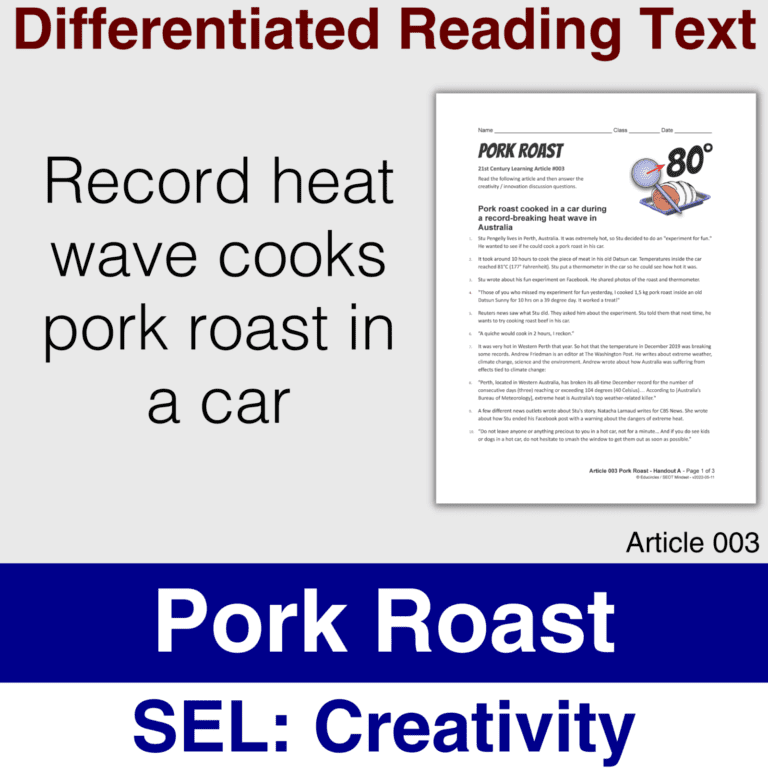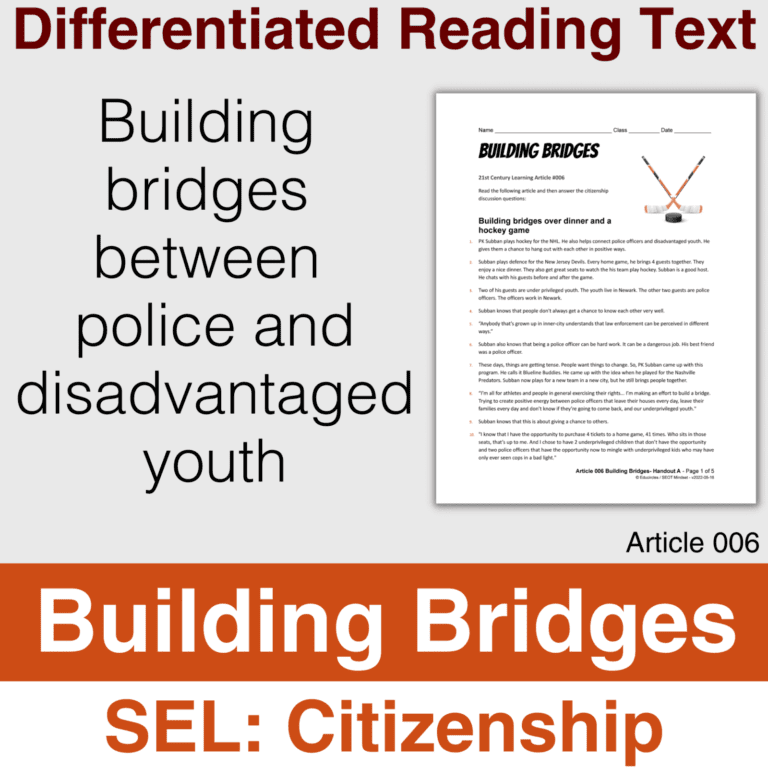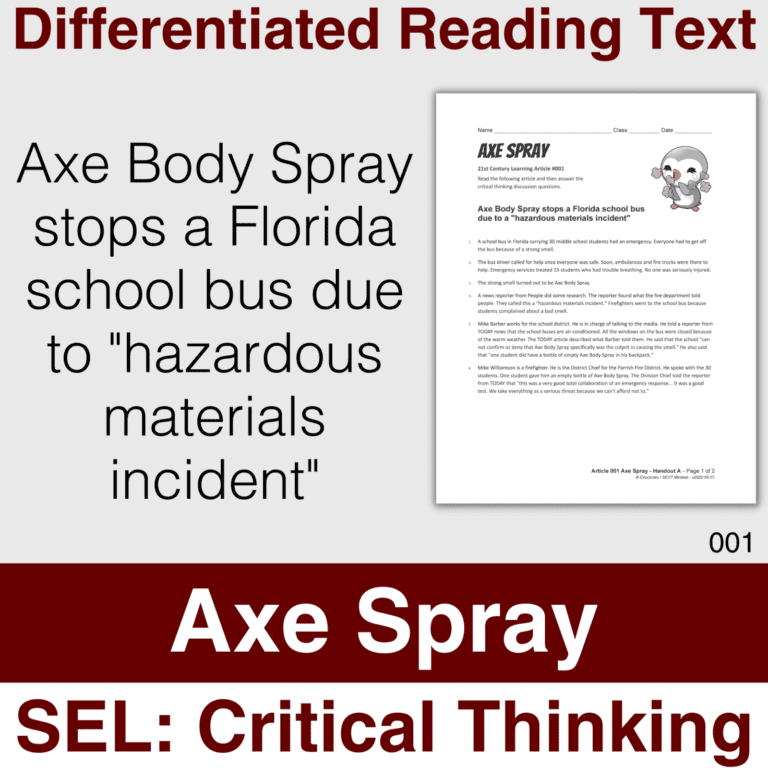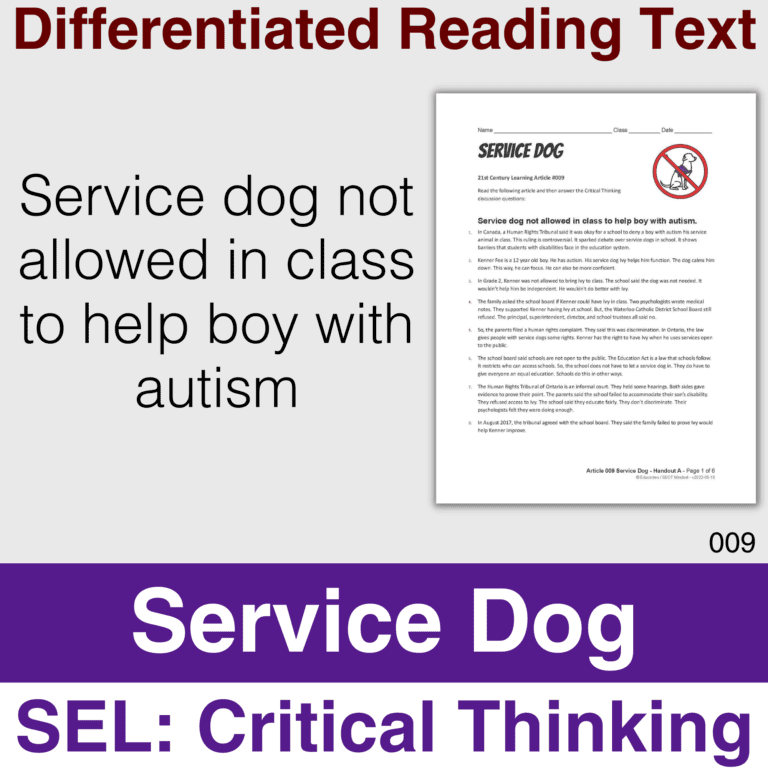This article is about CHARACTER and how a California surfer breaks stereotypes just by being herself.
Reading comprehension article handouts are differentiated at three reading levels (approximately Grades 5, 7, and 9.) Includes sample answers.
Mary Mills is a local California surfer who has written over 1,305 blog posts chronicling everything from her daily thoughts, her surf sessions, and her titanium knee replacement.
The takeaway message is that everyone faces obstacles at some point in life. Sometimes, we don’t want to do something. Or, we’re confused, stuck, or not sure what to do next. Or, maybe we tried, but it didn’t work out, so we give up.
Character is about having the grit, tenacity, and perseverance to overcome obstacles. We build character when we try to find a way not to give up.
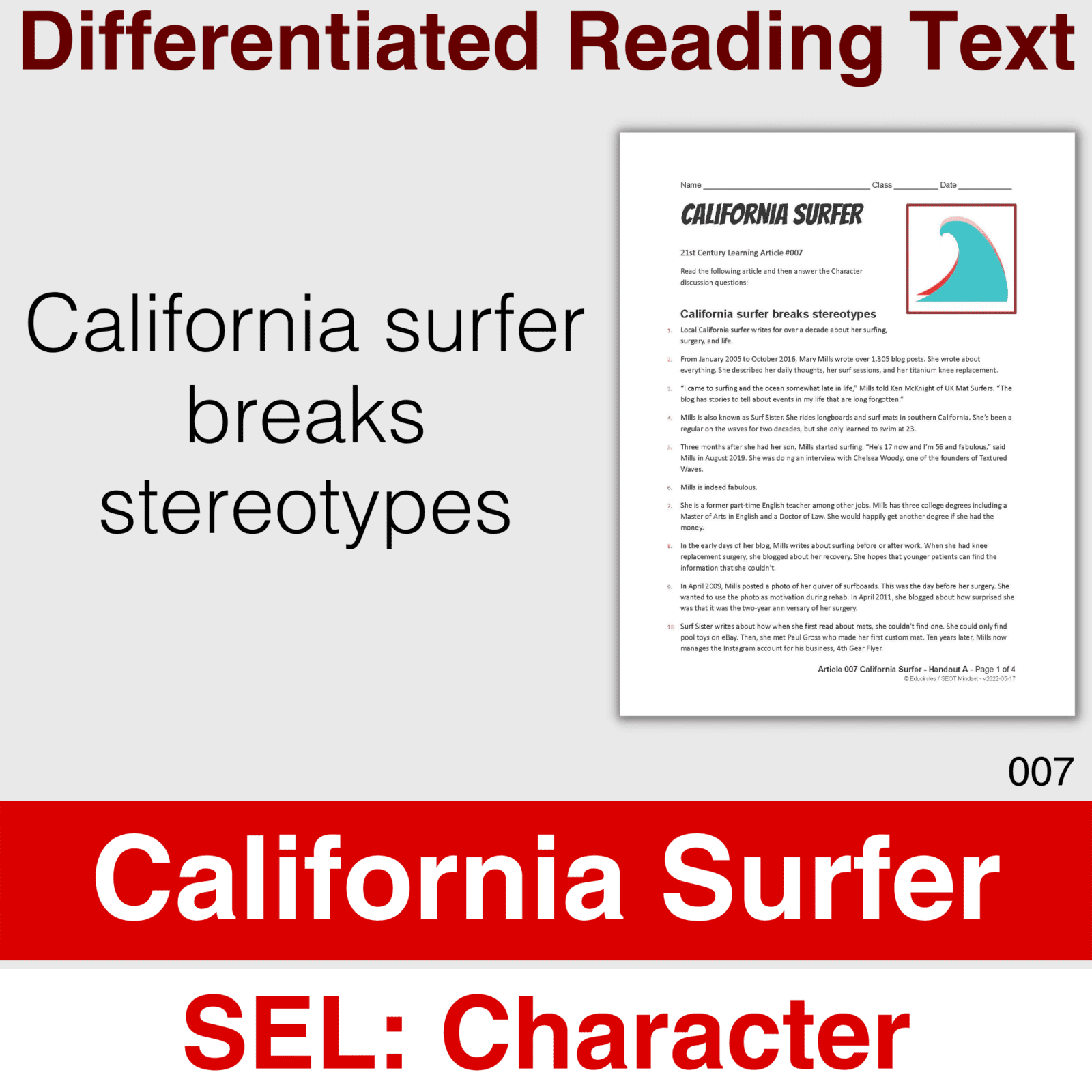
Want to see exactly what you get before you buy this product?
- Watch the PREVIEW VIDEO
- Look at the PREVIEW PDF.
(It is a watermarked version of the entire PDF resource.)
This article goes well with the INFERRING reading strategy.
California surfer breaks stereotypes
Local California surfer writes for over a decade about her surfing, surgery, and life.
From January 2005 to October 2016, Mary Mills wrote over 1,305 blog posts. She wrote about everything. She described her daily thoughts, her surf sessions, and her titanium knee replacement.
“I came to surfing and the ocean somewhat late in life,” Mills told Ken McKnight of UK Mat Surfers. “The blog has stories to tell about events in my life that are long forgotten.”
Mills is also known as Surf Sister. She rides longboards and surf mats in southern California. She’s been a regular on the waves for two decades, but she only learned to swim at 23.
Three months after she had her son, Mills started surfing. “He’s 17 now and I’m 56 and fabulous,” said Mills in August 2019. She was doing an interview with Chelsea Woody, one of the founders of Textured Waves.
Mills is indeed fabulous.
She is a former part-time English teacher among other jobs. Mills has three college degrees including a Master of Arts in English and a Doctor of Law. She would happily get another degree if she had the money.
In the early days of her blog, Mills writes about surfing before or after work. When she had knee replacement surgery, she blogged about her recovery. She hopes that younger patients can find the information that she couldn’t.
In April 2009, Mills posted a photo of her quiver of surfboards. This was the day before her surgery. She wanted to use the photo as motivation during rehab. In April 2011, she blogged about how surprised she was that it was the two-year anniversary of her surgery.
Surf Sister writes about how when she first read about mats, she couldn’t find one. She could only find pool toys on eBay. Then, she met Paul Gross who made her first custom mat. Ten years later, Mills now manages the Instagram account for his business, 4th Gear Flyer.
Her blog posts talk about everything. She writes about her approach with lifeguards (since matting was technically illegal.) She writes about 4:30 am waves and the magic of it all coming together. There are posts about surfing in pain. There are also posts about days when she surfs hard and doesn’t feel any pain at all. (What knee replacement?)
If you read a lot of her work, you get submersed in the love and passion Mills has for the surf. There’s also an underlying current of her experiences as someone who doesn’t fit in. She doesn’t fit corporate America and Hollywood’s definition of surf culture.
Mills talks about this in her 2011 when she wrote for The Inertia. She called her post, Don’t Laugh at Me and My Mat.
“When I paddle out at a spot where people don’t know me, I’m met with stares, silent curiosity, whispering and, ultimately, smiles. Those reactions used to unnerve me when I first started surfing. Over the years, I’ve gotten to the place where I don’t always notice the reactions of others when I enter the water. Then I started riding a mat.”
Most people surf on surfboards, not inflatable mats. But for Mills, mats are a game changer. She tries to explain the difference on her blog.
“Surfing a board separates you from the ocean in some ways. Riding a mat allows you to feel that energy. The mat is molding itself to the wave beneath it and the person on top of it. Your fins and legs are in the water doing their best to help you steer.”
It’s these types of experiences that lead Mills to call herself a “stereotype buster.”
One day, a photographer for the California Coastal Commission took a photo of Mills. They were updating their 2019 ad campaign. This year, they wanted to feature different people along the coast. Mills was wearing her red bodysuit and holding her surfboard. The ads would run on bus stations around California during tax season. The goal of the ads was to ask people to donate money to help protect the coastline.
Each person in the ad campaign described themselves. Mary Mills was surfer, mom, and stereotype buster.
Even the title of her blog shows her journey, not only of a surfer but of a stereotype buster. In the beginning, the blog was called “Surf and the fury”. Then the title was “As I Lay Surfing” and “Intruder in the surf.” Finally, the title changed to “Black people don’t surf – did I stutter?”
Mills was once asked about her role as an elder. Today, a younger generation looking for role models appreciate her voice and actions. Mills gave the following explanation.
“Surfing is my time, but what I will do is show up so people can see me, and if they need to take my picture that’s fine. I have allowed myself to be present because like I always tell folks, I don’t want anyone to ever say that black people didn’t surf.”
Character Mini-Lesson
Character is about having the grit, tenacity and perseverance to overcome obstacles.
Here are some common obstacles we see in the classroom. Have you said any of these before?
- I don’t want to.
- I’m confused. I’m stuck.
- I’m not sure what to do.
- I tried, but it didn’t work. I give up.
Everyone faces obstacles at some point in life.
The real question is, what do we do when things get tough? Do we give up? Do we complain? Do we feel embarrassed that it didn’t work? Do we just try harder even though it didn’t work the first time and hope for the best?
Do we try a different way? Do we take a step back and try to figure out what went wrong? Do we pay attention to results and wonder about what worked or didn’t work?
Each challenge we face is an opportunity for us to work on our character. We build character when we try to find a way not to give up.
Reading Comprehension Questions
Based on the article and the Character mini-lesson, how would you answer the following questions:
- This article is called, “California Surfer.” What images come to mind when you read that?
- What year did Mary Mills…
- start swimming?
- start surfing?
- start surfing on mats?
- have knee surgery?
- How old was Mary Mills when she
- started swimming?
- started surfing?
- started surfing on mats?
- had knee surgery?
- Mary Mills described herself as a “stereotype buster.”
- What stereotypes did she bust?
- Give an example of how some of those stereotypes are portrayed in commercials (corporate America) or movies (Hollywood).
- Explain how Mary Mills breaks those stereotypes.
- What obstacles did Mary Mills face? What does the text say explicitly, and what can we infer were some challenges she faced?
- Based on the mini-lesson, is this an example of good character? Why or why not?

